THEPERSPECTIVE
FOR EVERY CHILD, EVERY RIGHT





Dr. Dexter Frederick Associate Dean for Diversity, Equity, and Inclusion
Hello everyone,
I'm thrilled to share our final issue for 2024, themed around World Children's Day. In this edition, we delve into various aspects of childhood, from parenting insights to global perspectives. We're also honoring Transgender Day with an insightful interview featuring therapist Esther Loewen, who has shared her own transformative journey. Additionally, we're introducing a new section dedicated to showcasing talents on campus This issue features an interview with Jayde Frederick, author of "The Queen's Cure " If you're interested in sharing your own talent, please don't hesitate to reach out! Wishing you all a happy Thanksgiving, and I look forward to seeing you next year!
Marina AlNaser ('25)
Chief Editor
In This Month's Issue:
Celebrating Childhood - By Brandon Park Two Children, Two Worlds - By Mina Botros
Navigating Parenting - By Christina Galvez
Rocks - By Marina Alnaser
From Student to Storyteller - By Marina Alnaser
A Perspective of Courage - Interview of Esther Loewen Thanksgiving on Campus - By Kristen Dona
Ethical Dilemmas of Non-FDA Approved, Low-Cost Weight Loss Medications - By Yuna Han LMSA Spotlight
Equity in Curriculum Survey Link
If you would like to get involved in the DEI Newsletter please contact: Marina AlNaser - malnaser@students llu edu
Erica Levy-Licorish - elevylicorish@students.llu.edu
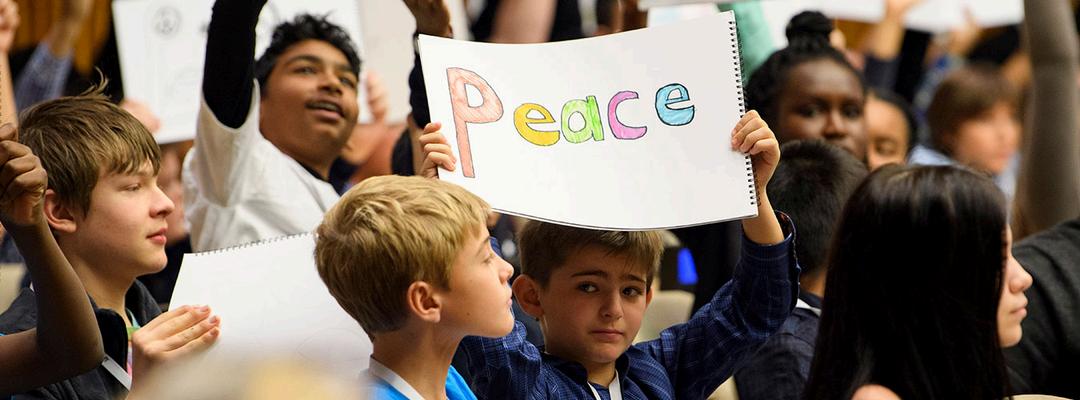
By Brandon Park, MS3
Significant strides have been made in advancing children's rights and well-being, since the adoption of the Convention on the Rights of the Child. Yet, numerous violations continue to occur without sufficient protection for vulnerable children. World Children's Day serves as a vital platform for children to express their beliefs and advocate for a brighter future. As UNICEF aptly states, it is “for children, by children,” while also reminding us to confront the ongoing atrocities faced by children worldwide.
Celebrated on November 20, World Children's Day honors children's rights and looks toward building a better future for the next generation. The color blue symbolizes the day, with many countries lighting up buildings to mark the occasion. Historically, there have been various observances, such as International Children's Day and Children's Week. Regardless of the specific date or manner of celebration, the core principle remains: children have rights and deserve a platform to voice their concerns for a better world
November 20 also marks two pivotal moments in history the 1959 adoption of the UN Declaration of the Rights of the Child and the 1989 ratification of the Convention on the Rights of the Child. These landmark human rights documents established that children are entitled to special protections, even in emergencies like war. The Convention transformed many nations' approaches to education, healthcare, mental health, and protection from exploitation, recognizing that children are not simply "mini-adults" but individuals with distinct needs for development, safety, and care. This was a revolutionary shift, especially for children previously deprived of basic rights.
Despite these significant achievements, new challenges continue to emerge. The rise of the internet has introduced fresh risks, such as online exploitation, and conflicts in regions like the Middle East and Africa have left children particularly vulnerable. Many live without homes or food, raising the question: does World Children's Day truly cover the whole world? While children’s rights have been established on paper, there are often no consequences for ignoring them. Perhaps we need a renewed commitment to address these ongoing gaps and challenges.

By Mina Botros, MS3
As the seasons change and the world transforms around them, two children find themselves in starkly different realities. Each embodies the spirit of celebration in their unique way, reflecting the joys and struggles of life in a world where conflict and abundance coexist
Across the ocean, back toward the Middle East, twelve-year-old Amir navigates a daily existence steeped in uncertainty. The sounds of explosions and distant gunfire permeate the air, combined with the anxious whispers of his family. Each blast sends a jolt through him, a reminder that safety is a fleeting illusion. The hope of a festive meal feels like a distant dream as his family scrambles to secure meager rations. Once filled with laughter and the comfort of shared stories, their gatherings now bear the weight of survival. Amir often gazes at the empty streets, hoping to one day play football with his friends like he used to.
Meanwhile, in Lakewood, CA, a city far from Amir's reality, Jamie eagerly anticipates a joyous gathering with family and friends. The kitchen buzzes with activity as loved ones come together to prepare a delicious feast, the air rich with the aroma of baked goods and vibrant dishes. Laughter and chatter fill the home, each voice weaving a tapestry of warmth and connection. Jamie’s heart swells with the joy of being surrounded by family; the freedom of a day off school is a breath of fresh air. The table reflects the love and care poured into every dish, a stark reminder of the safety and security Jamie often takes for granted.
While Jamie enjoys the festive atmosphere, Amir finds himself shackled by the silence of an empty classroom. The ongoing conflict has stripped away
the routine of education, leaving him with uncertainty. Days stretch into weeks without the familiar rhythm of lessons and laughter shared with friends. Each moment amplifies the longing for knowledge and connection, a desire to return to a place that once offered peace amid the chaos
For Amir, the joyous sounds of celebration are replaced by the stark reality of survival. His family faces food shortages, often waiting in long lines for basic necessities. In contrast, Jamie basks in the warmth of connection, embracing the joy of being surrounded by loved ones. The contrasts between their lives are not just differences in circumstance; they are profound reflections of human experience, shaped by the weight of fear and the brightness of joy. As the world shifts and celebrations unfold, Amir and Jamie gaze at the same sky, each touched by their unique circumstances. Amir's heart bears the burden of anxiety and loneliness, while Jamie revels in the light of togetherness and joy
In these stark contrasts, we witness the profound disparities faced by children around the world. While one child revels in abundance, the other fights for survival. Yet, both share a common humanity dreams, fears, and hope for a bright tomorrow. As we reflect on these stories, we are reminded that even the smallest acts of kindness can spark joy and connection, whether it’s sharing a meal or extending a helping hand. In a world divided by circumstance, let us strive to be beacons of hope, lighting up the lives of those who need it most. As we celebrate the richness of life and connection, let us remember Amir and countless others like him, waiting for the chance to feel safe, nourished, and educated. Together, we can ignite the spirit of hope in their hearts, bridging the gap between our two worlds.

While challenges arise at every stage of development, fostering a strong connection with your child can make discipline more effective. In No-Drama Discipline, Siegal and Payne emphasize that effective discipline goes beyond merely correcting behavior; it’s about teaching skills and nurturing brain connections that help children make better decisions in the future.
Shift your perspective on discipline to focus on teaching rather than punishment. Prioritize your own well-being and emotional awareness, as this allows you to model healthy coping strategies for your child.
Earlier this year, the Surgeon General highlighted significant concerns regarding parental stress. Common sources of this stress include:
Time demands
Concerns about children's health and safety
Challenges in finding reliable childcare
Cultural pressures
While social media can provide a distraction, it often exacerbates feelings of inadequacy and the pressure to be the "ideal" parent. From my experience as a marriage and family therapist, I emphasize the importance of connection, communication, and consistency in building strong parent-child relationships.
Clear and respectful communication is crucial for fostering feelings of safety in your child. Consistency reinforces this sense of security, which in turn encourages connection. Here are some practical tips: Avoid Overcommitment: Resist the urge to take on too much, both for yourself and your child.
Encourage Unstructured Play: Children thrive during imaginative playtime, which fosters creativity and independence.
Share Meals Together: Enjoy unplugged meals as a family to create intentional, distraction-free bonding moments.
Remember, there’s no "perfect" way to parent. Each child is unique, with their own temperament and needs. Be kind to yourself this lesson is invaluable for your children as well!
By Marina Alnaser, MS4

It is a cold night
I can hear the wind
Humming on the outside
Crying within I am standing alone
Behind what used to be a wall
Now, it is rocks, broken windows, silent souls...
My hands are shaking
My voice is trembling
My body is in shock
Yesterday I had parents
Today, they are rocks
My small body can’t bear it all I cry for help, I cry for home
No one to hug me, to lessen my fear
Yesterday, I was a child.
Now, I am barely here.
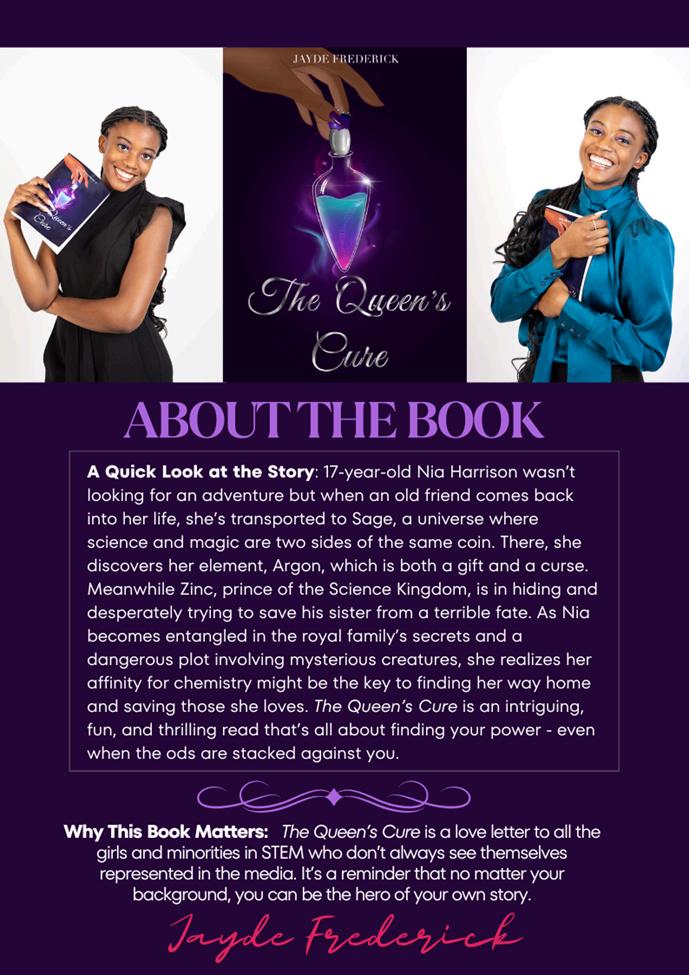

Ry book ademic f those l as by luding , while me all my age in 7th nd I’ve ce life many able to. tantly, at are munity. or selfer, and cover
artwork myself. I definitely had to raise money for it and without the generous donations of people from my community, I likely would not have been able to publish There are many different options to sell a book, I chose to start selling through my website, however there are also ways to sell on other websites such as amazon.
by Marina Alnaser, MS4
In honor of Transgender day, I had the opportunity to interview Esther Lowen, who is an Associate Marriage and Family Therapist, an educator, and a public speaker. In addition to working as a mental health therapist, Esther also produces and hosts the podcast "Transgender Woman Talking”, a show about life outside cisgender norms. She is married to her life-partner of 18 years, with whom she shares the joy of parenting their two brilliant, creative, energetic, and empathetic children. You can learn more about Esther and her work, including her podcast, at: http://www.estherloewen.com.
Could you share your experience as a transgender woman? What led you to make that decision to transition, and what challenges did you face along the way?
I grew up during the 1980s and 90s within a small-town multi-generational Seventh-day Adventist family. Transgender people or experiences were not included in the worldview, nor were those of anyone not of heterosexual orientations. As such, I didn’t automatically have context to explain why I was drawn to the feminine, felt foreign among masculinity, and experienced a variety of other forms of gender dysphoria. To me, and to my church of youth, these were deeply sinful thoughts and impulses that needed to be purged. For many years I hid in shame, believing that I was defective and evil. This was profoundly corrosive on my soul, to my work, and to my connection to the divine.
After more than 20 years of intense efforts to expunge my gender dysphoria through a variety of change-therapy techniques and prayer, I started to sense a different path. “What if God made me this way, and did so for a reason greater than myself? What if the social and physical changes of transition are a God-ordained calling, not unlike ministry has been?” In the end, pursuing transition felt not at all like a giving in to a long cherished sin, but as the next step in journey of holy transformation. I believe transgender people are part of God’s diverse creative order; and that our transitions in whatever form they take, are part of the creative mandate humans were given from the very beginning.



Additionally, how does your identity as a transgender therapist influence your practice?
Becoming a psychotherapist (I’m currently an AMFT working in community mental health and private practice) wasn’t part of my original plan. Therapy came to me as a mid-life career change. Most of the time, it feels like a gift to be transgender and working in mental health. I can connect with people of marginalized sexualities and genders in ways that cis and straight people are not, and I can empathize with the pressure that minority stress places on the queer community. By having experienced the pain of rejection and the fear of cruelty or violence, in some small way I can better relate with people who have suffered in different ways than I. Other times, being transgender in the therapy world can feel difficult because of the dogmatic and false rhetoric spewed about us recently in the political space. Sometimes I find myself worrying if my identity as a transgender woman might negatively affect clients’ interest in working with me, or our ability to create a therapeutic alliance. Because transgender people and identities are often misunderstood and/or debated among cisgender people, it can be challenging at times to avoid worrying about unhelpful transference in the therapy room.
What are some common misconceptions or mistakes people make when discussing transgender issues?
My professional life has been filled with 15 years of ordained pastoral ministry in the Seventh-Day Adventist Church, authoring a book about keeping and telling secrets, and earning two master’s degrees (MAGL from Fuller Theological Seminary in Pasadena, and MAMFT from the California School of Professional Psychology at Alliant University). People in the queer community perceived me as a white straight man. I represented the height of privilege and power. Those living outside the hierarchical gender and sex binary did not feel safe around me, and for understandable reasons! In many ways, I’m new to the transgender experience — most of my life I lived as a closeted transgender woman who passed very easily as a cisgender man. Part of my work early on in coming to terms with my gender was unraveling some of my own misconceptions about gender and trans issues. Culturally, transphobia runs rampant not only among cisgender people, but among us all. All of this is to say that the myths, outright lies, and misconceptions about trans people are nearly limitless.
Complicating matters, the trans experience is not a monolith. We all navigate the experience of gender dysphoria, gender expression, and transition differently — and through the lenses of our intersecting identities. As a white Christian transgender woman who transitioned later in life, my perspective will be resonant but different from a Latina transgender woman who transitioned in her twenties. These factors make it critical to not assume you know much of anything about a trans person based upon that fact alone. We are integrated people just like anyone else, and our transness is just one aspect of what makes us tick and what’s important to us.
By Kristen Dona, MS3
With Thanksgiving coming, we asked multiple students on campus what they are thankful for and their plans for this year!
Nicole Evangelista, MS3
I’m thankful for so many things this year! It’s been a year of changes, meaning opportunities to grow. I’m thankful to God I get to celebrate passing Step 1 and completing half of 3rd year I wouldn’t be where I am without my wonderful support system of mentors, family, and friends who always encourage and guide me. I’m thankful for the privilege of learning about the human body through hands-on experiences and how a mere student like me can still be a vessel to uplift others. The shift to clinical year is all about change in perspective, and I found that adopting a mindset of gratitude has made the year so much less daunting.
Andrew Nguyen, MS1
I'm thankful for the opportunity to pursue medicine, for the camaraderie and friendship of my roommates whom I met only online before coming here, and for the support of my friends and family.
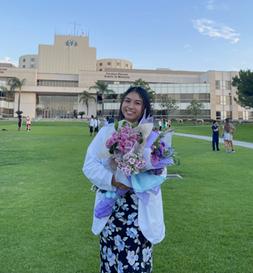
At the risk of sounding cliché, this year I’m abundantly grateful for my family, health, and the opportunity to slow down and travel some.


I'm thankful for my friends and family for being my mental and emotional backbone and support as I traverse through the difficulties of medical school!


I am thankful for A LOT of things, I know it sounds cliche, but I really am But what comes to mind at this moment, is my sister who will be giving birth to my first nephew by the end of the month! I will be flying home to Brazil to meet him and be there for her! I am also thankful that third year so far has brought some amazing people into my life (Kristen Doña and Tiffany Racataian, for example ). And of course I am extremely thankful for my husband and his support.
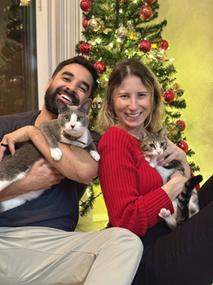

By Yuna Han, LLUH Internal Medicine Resident, PGY1
As a part of my internal medicine training, I spend a significant amount of time at SAC Health in San Bernardino. SAC Health is the largest specialty-based and teaching health center FQHC in the nation, providing medical care to underserved communities of the Inland Empire and surrounding counties
Many patients in our underserved communities struggle with obesity, and unfortunately, even a BMI >40 is not uncommon. Many of them have coexisting diabetes, but some do not. For many patients, lifestyle modification must be paired with medical or surgical therapies. As a result, we often prescribe GLP-1 agonists such as Mounjaro, Wegovy, and Ozempic. GLP-1 analogs work in part by slowing down how quickly food passes through the stomach, leading people to experience satiety for longer and eventually, experience weight loss.
In fact, following the hit success of Novo Nordisk’s Ozempic and Wegovy and Eli Lilly’s Mounjaro and Zepbound, drug companies have been racing to develop other GLP-1 drugs. Companies were further motivated by the declared shortage of the active ingredient in Mounjaro and Zepbound (Tirzepatide) in December 2022, attributed to increased demand and interest in GLP-1 medications.
Although the Food and Drug Administration (FDA) recently confirmed that the shortage is now considered resolved, the drug’s shortage status made room for compounded versions to be sold through clinics and telehealth platforms. These compounded versions, often referred to by drug manufacturers as “copycat” versions, are easily accessed online for a fraction of the cost
However, the problem comes as compounded drugs do not go through the FDA’s rigorous review for safety, effectiveness, and quality as part of the premarket approval process. On Wednesday, October 2nd, the FDA cautioned that under the Federal Food, Drug, and Cosmetic Act, compounded drugs sold by 503B pharmacies “may not be identical or nearly identical to an FDA-approved drug unless the approved drug is on FDA’s drug shortage list.” This means that patients must be careful of telehealth platforms that use 503B pharmacies to source their compounded GLP-1s.
According to the FDA website, as of August 31st, 2024, the FDA received 346 and 136 reports of adverse events with compounded semaglutide and tirzepatide respectively. These numbers are likely much lower than the actual, as state-licensed pharmacies that are not outsourcing facilities are not required by federal law to submit adverse events to the FDA. Thus, the FDA recommends patients to obtain a prescription from their doctor and fill the prescription at a state-licensed pharmacy. Patients can also use the BeSafeRx website to locate safe, state-licensed online pharmacies.
As the question of whether online companies can continue selling their compounded versions with tripeptide no longer in shortage remains, the FDA vows to continue working with its state regulatory partners and compounders regarding these concerns. For the time being, it is up to the primary care providers to educate patients on best, safe practices for obtaining weight loss medications.

The Latino Medical Student Association (LMSA) works to support the Hispanic and Latina/o/x community by unifying and supporting medical students and physicians, especially those who identify as Hispanic or Latina/o/x On September 20-22, members of the LLU LMSA chapter attended the National LMSA Conference at the University of Southern California The event provided members of LMSA the opportunity to celebrate Hispanic/Latinx culture; and to network with medical students and physicians from across the country.
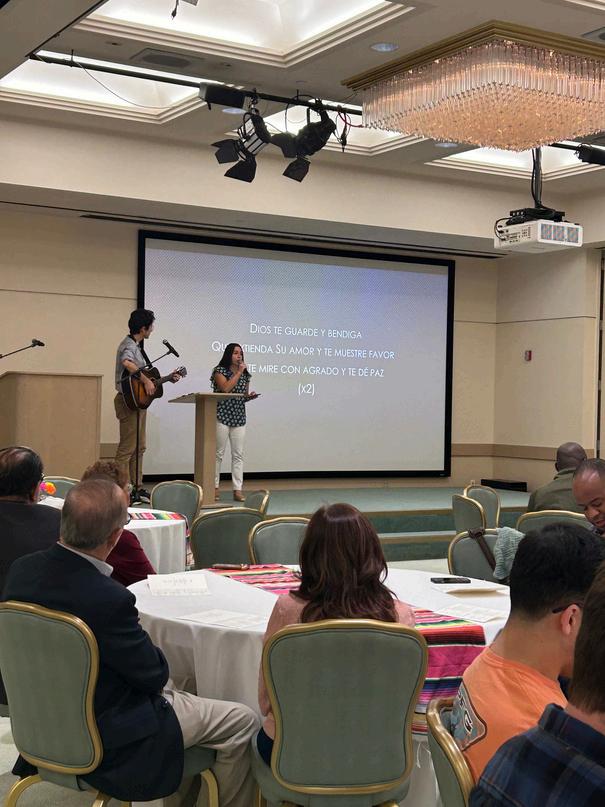

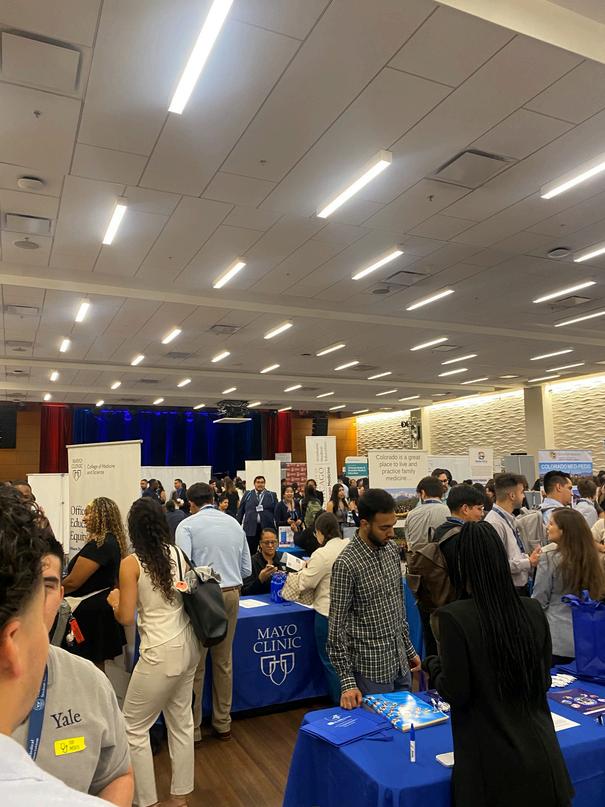


On October 25, LLUSM and LMSA hosted a Hispanic Heritage Month Dinner and Vespers featuring a special viewing of “Life on the Line”andthepowerfultestimonyofDr Dafne Moretta The event celebrated and honored the vibrant heritage of Hispanic and Latina/o/x medical students, faculty, and physicians of LLU. Dr. Moretta’s testimony reminded attendees of the faithfulness of God and His invitation to love those around us.
The Equity in Curriculum survey is a platform that the School of Medicine provides for students to be able to share their thoughts on any aspect of the curriculum or learning environment they think does not currently promote wholeness or belonging. This can be in response to a specific incident or a broader concern.
The process of what happens with the responses to this survey is as follows: If you choose to utilize the Equity in Curriculum survey, please be as specific as you can be in your responses (i.e. time, place, student-professor dynamics) as only then will the committee be able to properly respond to the concern. This is not a survey to complain or “get faculty/students in trouble,” but rather a way to identify where we can improve in promoting equity in our curriculum and on our campus. It was created to respond to students' perspectives in real-time, so please make use of it if there is something you'd like to express!
Only Dr. Hayton (Associate Dean of Physician Formation & Wholeness, School of Medicine) and Dr. Frederick (Associate Dean for Diversity, Equity, and Inclusion, School of Medicine) have access to the responses, which are reviewed regularly. Any specific comment is forwarded to the dean who oversees the course or area of curriculum it is referring to. The dean who receives the forward is asked to report back to Dr. Hayton and Dr. Frederick when feedback is given or what action has been taken. The summary of the comment and the action taken is reported to the DEI and SECEC committee quarterly. Students on those committees are asked to disseminate any relevant comments to classmates as needed.
Please use the following link to access the survey.
https://llu.co1.qualtrics.com/jfe/form/SV_78PDMfde4h44DH0
Cover Page
Photo Credit: https://images.pexels.com/photos/28991569/pexels-photo-28991569/free-photo-of-curiouschild-peering-through-glass-window.jpeg?auto=compress&cs=tinysrgb&w=800
Page 2
https://www.un.org/en/observances/world-childrens-day
https://www savethechildren org/us/charity-stories/universal-childrens-day https://www unicef org/world-childrensday#:~:text=World%20Children%27s%20Day%20takes%20place,to%20listen%20to%20the%20future https://www unicef org/child-rights-convention
Photo Credit: https://www un org/en/observances/world-childrens-day/background
Page 3
Photo Credit: © Fand / stock.adobe.com
Page 4
Photo Credit: https://firstthings.org/motivated-parent/
Page 5
Photo Credit: https://www.pexels.com/photo/exploded-house-in-borodyanka-11734710/
Page 6
Photo Credit: © Oleksandr / stock.adobe.com
Page 7
Photo Credit: https://images.pexels.com/photos/2212718/pexels-photo-2212718.jpeg? auto=compress&cs=tinysrgb&w=1260&h=750&dpr=2
Page 8
Photo Credit: https://images pexels com/photos/2212718/pexels-photo-2212718 jpeg? auto=compress&cs=tinysrgb&w=1260&h=750&dpr=2
Page 10
https://www sachealth org/about https://www.nbcnews.com/health/health-news/beyond-ozempic-glp-1-drugs-promise-weight-loss-healthbenefits-rcna157525
https://www.nytimes.com/2024/10/03/well/mounjaro-zepbound-shortage-compounded-tirzepatide.html https://thehill.com/policy/healthcare/4913155-mounjaro-zepbound-no-shortage/ https://www.fda.gov/drugs/postmarket-drug-safety-information-patients-and-providers/fdas-concernsunapproved-glp-1-drugs-used-weight-loss
https://www.fda.gov/drugs/quick-tips-buying-medicines-over-internet/besaferx-your-source-onlinepharmacy-information
Photo Credit: cottonbro studio from Pexels